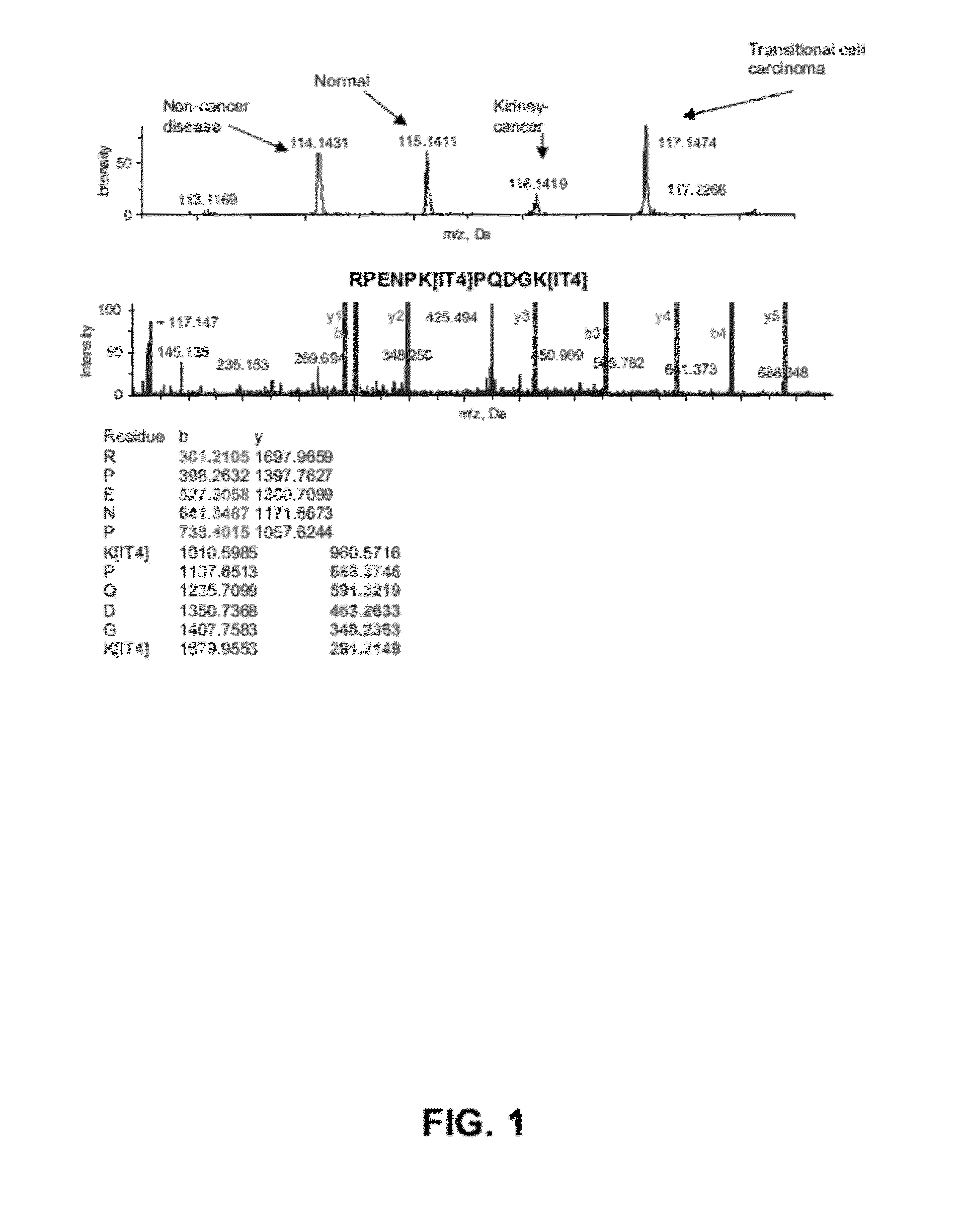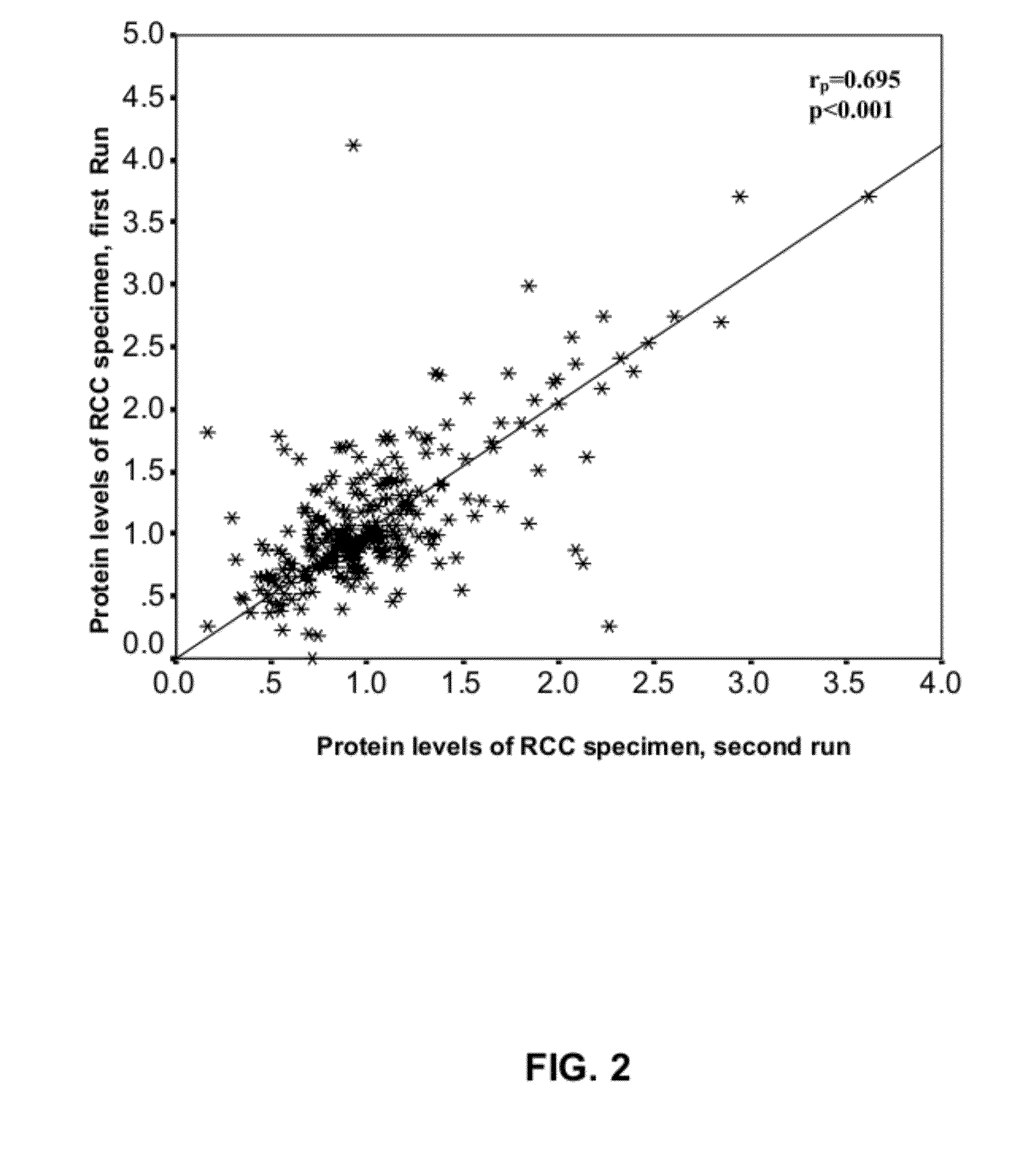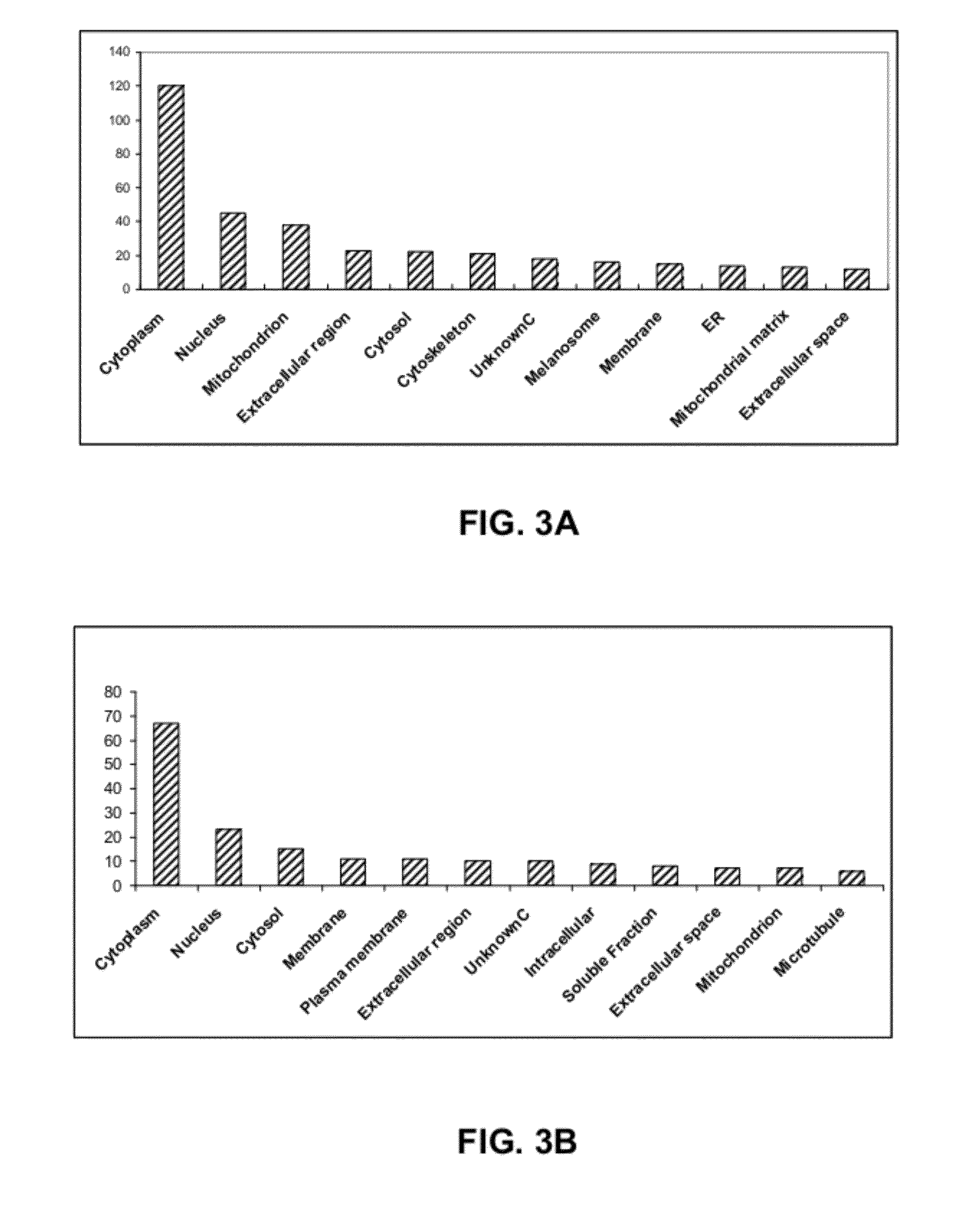Renal Cell Carcinoma Biomarkers
a technology of renal cell carcinoma and biomarkers, applied in combinational chemistry, chemical libraries, libraries, etc., can solve the problems of limited treatment options, limited biomarkers, and serious challenges
- Summary
- Abstract
- Description
- Claims
- Application Information
AI Technical Summary
Benefits of technology
Problems solved by technology
Method used
Image
Examples
example 1
Samples and Reagents
[0377]Tumor tissue from patients diagnosed with RCC and their adjacent normal counterparts were obtained from nephrectomy specimens at St. Michael's hospital, after obtaining an informed consent, or from the Ontario Tumor Bank. As RCC is known to arise from the proximal tubules (Pavlovich, Schmidt 2004), the kidney cortex was used as a normal control (Sarto et al., 1997; Shi et al., 2004). The histologic diagnosis for each sample was reconfirmed using microscopic examination of a hematoxylin-and-eosin-stained frozen section of each research tissue block. The tissue from the mirror face of the histologic section was then washed three times in approximately 1 ml of phosphate-buffered saline (PBS) with a cocktail of protease inhibitors, as described previously (1 mM 4-(2-aminoethyl) benzenesulfonyl fluoride, 10 μM leupeptin, 1 μg / ml aprotinin, and 1 μM pepstatin) (1). The washed tissue was then homogenized in 0.5 ml PBS with protease inhibitors, using a handheld hom...
example 2
Strong Cation Exchange (SCX) Separation Conditions
[0379]For the offline 2D LC-MS / MS analysis, each set of labelled samples was first separated by SCX fractionation using an HP1050 high-performance liquid chromatograph (Agilent, Palo Alto, Calif., U.S.) with a 2.1-mm internal diameter (ID)×100-mm length polysulfoethyl A column packed with 5-μm beads with 300 Å pores (The Nest Group, Southborough, Mass.), as previously described (21). A 2.1-mm ID×10-mm length guard column of the same material was fitted immediately upstream of the analytical column. Separation was performed, as previously described (21). Briefly, each pooled sample set was diluted with the loading buffer (15 mM KH2PO4 in 25% acetonitrile, pH 3.0) to a total volume of 2 ml and the pH adjusted to 3.0 with phosphoric acid. Samples were then filtered using a 0.45-μm syringe filter (Millipore, Cambridge, ON, Canada) before loading onto the column. Separation was performed using a linear binary gradient over one hour. Buffe...
example 3
LC-MS / MS Run Conditions
[0381]The inventors used a nanobore LC system from LC Packings (Amsterdam, The Netherlands) consisting of a Famos autosampler and an Ultimate Nano LC system. The LC system was interfaced to an API QSTAR Pulsar-i hybrid quadrupole / time-of-flight (QqTOF) tandem mass spectrometer (Applied Biosystems / MDS Sciex, Foster City, Calif.) equipped with a Protana NanoES ion source (Protana Engineering NS, Odense, Denmark). The spray capillary was a PicoTip SilicaTip emitter with a 10-μm ID tip (New Objective, Woburn, Mass.). The nanobore LC column was 75-μm ID×150-mm length reverse-phase nano capillary column packed in-house with 3 μm C18 beads with 100 Å pores (Kromasil). One μL of sample was injected via the “μL-pick-up” mode. Separation was performed using a binary mobile-phase gradient at a total flow rate of 200 mL / min. For nanospray analysis, the following source conditions were used: a curtain-gas setting of 20 and an ionspray voltage of 1800-3000 V, Q0 declusterin...
PUM
| Property | Measurement | Unit |
|---|---|---|
| temperature | aaaaa | aaaaa |
| temperature | aaaaa | aaaaa |
| Ka | aaaaa | aaaaa |
Abstract
Description
Claims
Application Information
 Login to view more
Login to view more - R&D Engineer
- R&D Manager
- IP Professional
- Industry Leading Data Capabilities
- Powerful AI technology
- Patent DNA Extraction
Browse by: Latest US Patents, China's latest patents, Technical Efficacy Thesaurus, Application Domain, Technology Topic.
© 2024 PatSnap. All rights reserved.Legal|Privacy policy|Modern Slavery Act Transparency Statement|Sitemap



